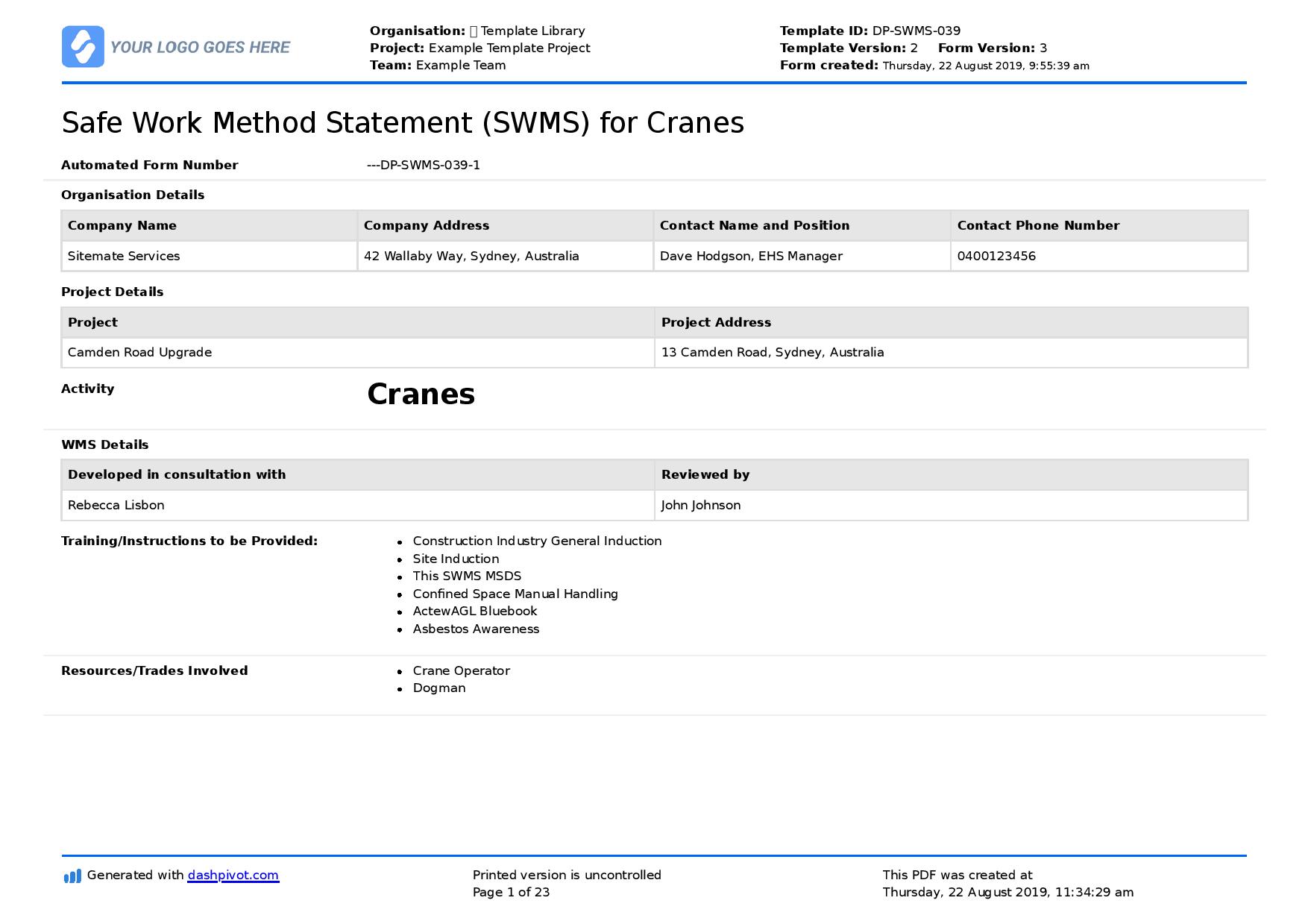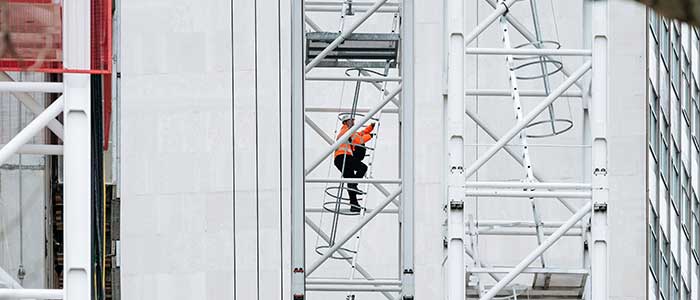Crane Safe Work Method Statement Template
Start with a free 30-day trial. No credit card required.

~10,000 employees
~500 employees
~25,000 employees
~20 employees
~50 employees
~1,500 employees
~20 employees
What is a Crane Safe Work Method Statement?
A Safe Work Method Statement for Cranes enables a company, team or project to properly outline their approach to working with cranes. This includes basic safety requirements like training and instructions and PPE, as well as a comprehensive dive into different job steps and their associated hazards and controls.
Every worker conducting crane operations or working closely with cranes should review and acknowledge your SWMS, meaning they have read and understood how to approach this work safely.
Always keep SWMS for cranes updated so they remain effective and useful in keeping everyone safe on the job. It's also important to make it easily digestible so anyone who read it will understand and follow through – making operations run smoother and safer.
Compare this Crane SWMS vs. other Word, Excel and PDF formats
Use this Crane SWMS template for free.
How can a Safe Work Method Statement make operations safer?
Cranes are incredibly powerful tools on construction and industrial sites, but they also pose a number of risks for operators, workers and projects.
There are multiple documents and permits companies use to mitigate the risks of crane operations, and one of the most used and trusted is a Safe Work Method Statement for cranes.
A SWMS specifically made designed for cranes helps workers detail out the individual steps in operating cranes, point out the associated risks, and give insight on how to operate cranes safely and keep safe.
Here are indicators you need a SWMS for your crane operations:
- If your crane operations check off even one of the categories under the High-Risk Construction Work (HRCW) then you need to develop a SWMS for crane works
- If you're working near power lines (likely), in public or confined spaces
- If you're working at heights while lifting heavy and/or hazardous loads
- If you see that you're putting multiple workers and the public at risk. Extra precautions should be placed to avoid accidents involving pedestrians and regular citizens.
What should be included in a Crane SWMS and how often should it be updated?
There's no strict or mandated template for a Crane SWMS, however the local regulations and standards you follow might have mandated items to be included, and here are the common/generic ones usually:
- Hazard/risk identification, assessment, and control measures: listing all possible risks associated with the crane work and including the control/safety measures to lessen the risk
- A breakdown or step-by-step crane work plan
- Emergency procedures in case of fire, medical emergency, etc.
Crane SWMS should be updated whenever necessary, like you're using a new crane, or you're changing the site, or using a new method for the crane job. If you're doing another crane job, however, you should always make another SWMS specifically for that.
How to effectively implement Safe Work Method Statements for your Cranes?
Although the SWMS is just a regular document, might be lengthy depending on the time of work, you should still find ways to make it effective and easily digestible for everyone on site. Sometimes when you're dealing in fast-paced industries, you need to be straightforward and direct – and the same rule applies to making your SWMS for cranes easier to follow.
- Make it simple. Use simple terms, keep the steps for crane work straightforward.
- It might be better to even run through the SWMS with your team before even starting work, just to ensure everyone sets safety as their priority.
- Always check regularly that your workers are sticking to whatever is written on the SWMS and practice them by heart.
- Remember, each crane job has a unique SWMS. Don't reuse the same document for a different crane job. Risks, hazards, and other dangers differ per crane job, so you should active update the SWMS. Even if it's the same job, you should still be on the lookout for any risk changes.
Other popular templates you can use and edit for free

Safe Work Method Satement for Working at Heights
Reduce the likelihood and consequences associated with terrible working at heights incidents by better managing and communicating your SWMS.

Safe Work Method Statement for Demolition
Ensure all workers involved with demolitions understand your work method statement and hazard controls properly using this template.

Safe Work Method Statement for Scissor Lifts
Scissor lifts pose a constant and significant risk to operators and surrounding workers. Improve your scissor lift safety with a reliable SWMS.
This SWMS was generated with Dashpivot
This crane SWMS is easy to use and manage:
- Modify the cranes safe work method statement for your own safety requirements and operations, or specifically for mobile cranes, crane trucks etc.
- Give crane operators, dogman and other workers access to the SWMS on site (with their phone or tablet) so they can easily read and acknowledge the method statement.
- Store your SWMS online or export your records as privately branded PDF or CSV documents.
- Keep one source of truth cranes SWMS which multiple people can access and update at the same time.
Sitemate builds best-in-class software tools for built world companies.






















